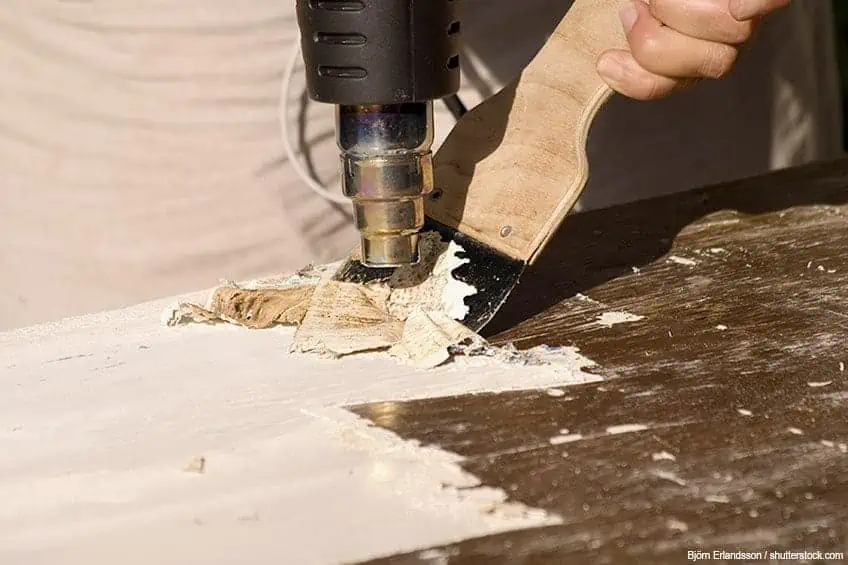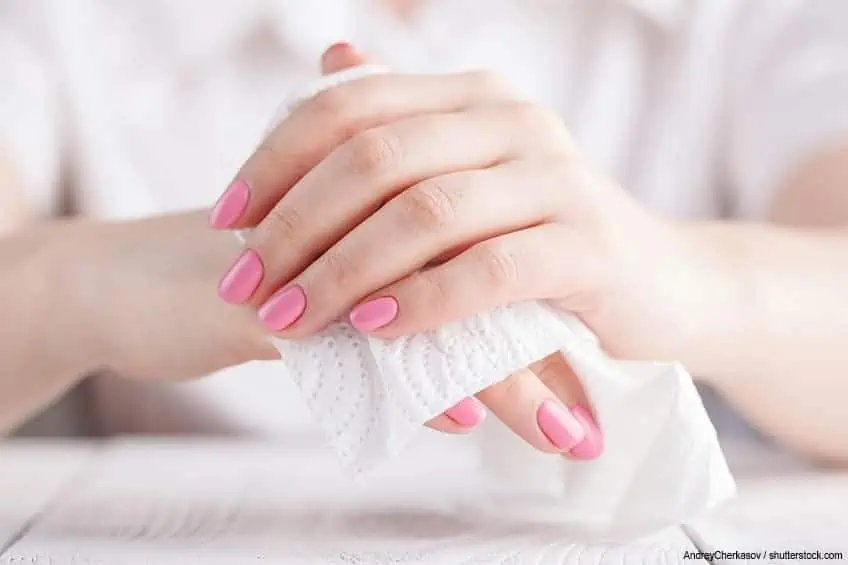How to Remove Epoxy Resin From Table Top
This mail may contain affiliate links. We may earn a small committee from purchases made through them, at no boosted cost to you.
Epoxy resin is an extremely versatile material and working with information technology offers a number of advantages. As long every bit the resin stays where it should. If the resin gets to places where yous don't want it, it is sometimes very difficult to remove it once more. During removal, the advantages of the material, namely the exceptionally good adhesion and the fact that epoxy is extremely hard and stable after curing, apace turn into quite a few disadvantages. With our tips, notwithstanding, information technology will still be no problem for you to remove casting resin that accidentally gets on your skin or other objects.
Tabular array of Contents
Removal of not completely hardened Casting Resin
The removal of non yet completely cured epoxy resin is of class much easier than if the material is already completely dry out.
For this purpose, the use of isopropyl alcohol (also known as isopropanol) is the near suitable option. Epoxy can also be removed very well with vinegar or acetone if it has not withal dried through.

Removal of fully cured Epoxy on Surfaces
If the resin is already completely dry, removal is much more difficult. However, there are still some methods you can utilise to remove the casting resin afterwards information technology has cured.
Adhesive Remover
If some epoxy has accidentally been applied to a surface, it can exist effectively dissolved when dry with a special agglutinative remover. However, this method is more suitable for small spillages on wood or plastic.
Universal Thinner
A solution of denatured booze and paint thinner, a so-chosen universal thinner, is as well suitable for removing resin residues from surfaces.
Denatured Alcohol / Ethanol
If the epoxy resin is not yet fully cured, information technology can exist removed very easily from the corresponding surface with denatured alcohol. To do this, a cloth is soaked in ethanol and the area to be treated is then briefly wiped clean. If the casting resin is already completely dry, the affected surface area must first exist softened with pigment thinner before treatment with ethanol.
Tip: A inexpensive alternative to the expensive pure alcohol is methylated spirits. The consequence is practically the same and the spirit can be used for many other purposes. When using methylated spirits, however, note that it is extremely flammable.
Heat Gun
Fully cured epoxy tin can exist extremely stubborn to remove, merely a oestrus gun is a very useful tool help with this. The dried resin is softened by the hot air and can so be removed mechanically, east.g. with a spatula or paint scraper. Hot air guns with temperature command accept proven to be effective in this procedure, equally epoxy resins usually soften from around 200 ° C. We recommend that only small sections of the resin to be removed are heated at a time and then removed.
As e'er when working with epoxy resin, your health should exist your kickoff priority. Wearable gloves to protect against burns and a respirator to prevent inhalation of the vapors generated by the heat.

Removal of Resin residues on the Skin
Vinegar
Vinegar is a very effective remedy if some epoxy resin has accidentally landed on your skin. This agent even helps when the resin is already cured. Put the vinegar on a material and soak the area to exist cleaned on your pare with it. Once the resin is softened it can be hands removed.
Acetone
The utilise of acetone is also a very effective ways of removing casting resin from the pare. Like vinegar, acetone has the advantage that you lot often take it in your house anyway and do not have to especially buy information technology. To remove the resin, soak a cotton swab with acetone and rub it into the appropriate area. The resin softens in this way and can be easily removed.
Watch your rubber here too. The vapors independent in acetone should not be inhaled for an unnecessarily long time. Therefore, you should only employ this production in rooms that you tin can ventilate properly. Since acetone is extremely combustible, make certain that there are no open flames in the vicinity.
Acetone removes a lot of moisture from the pare. Wash your hands thoroughly with soap and h2o afterwards removing the resin. A moisturizing foam chop-chop makes upwardly for the loss.
Tip: Every bit smash polish remover consists mainly of acetone (exception: there are some that may notation "acetone-free" on the packaging) information technology is likewise suitable for removing epoxy resin from the pare if pure acetone is non available.

Citrus-based waterless Manus Cleaner
The removal of resin residues with vinegar or acetone is an extreme strain on the skin. A much more skin-friendly alternative is a citrus-based cream cleaner. This is as well much less stressful for the respiratory tract. To clean information technology, simply utilise some of the manus cleaner to the affected area, rub information technology in thoroughly, and and so wash the foam off with water. The only disadvantage of this method is that it is much less effective than the other two methods.
How to Remove Epoxy Resin From Table Top
Posted by: dolanallob1984.blogspot.com
